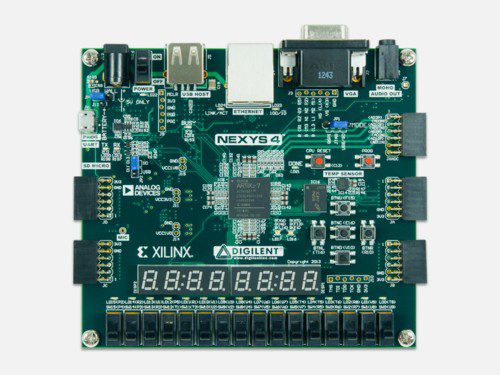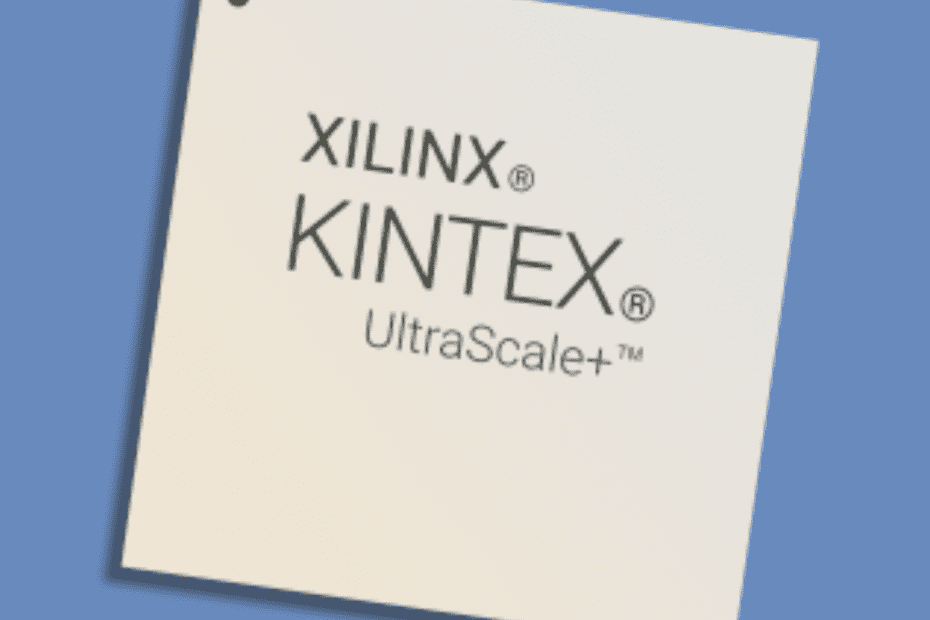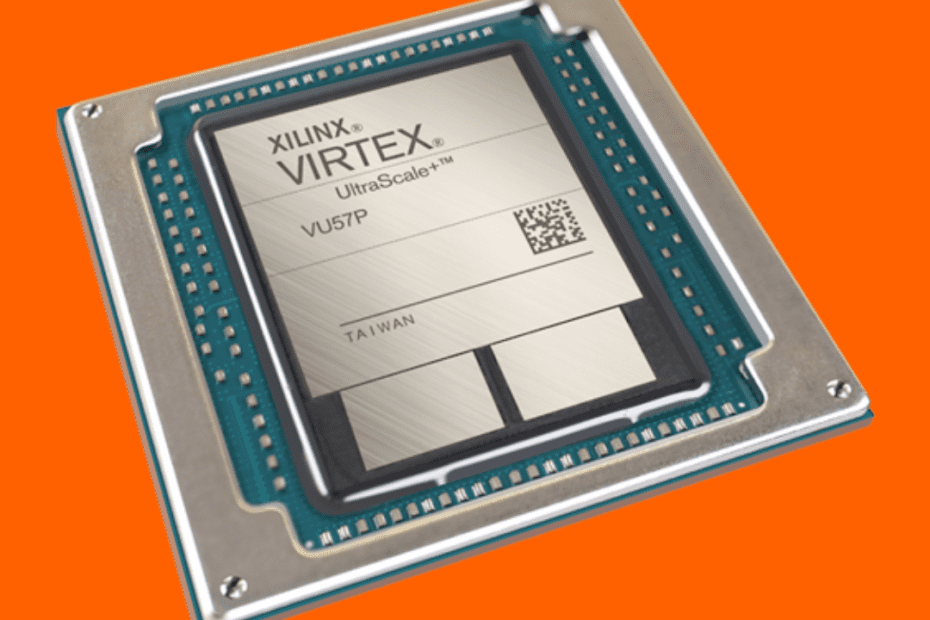The Artix-7 FPGA family is one of the four FPGA families from Xilinx, the other three being Kintex-7, Virtex-7, and Zynq-7000. The Artix-7 FPGA family targets cost-sensitive and high-volume applications that require high performance and low power consumption. The family consists of various devices, ranging from the smallest Artix-7 FPGA with 6K logic cells to the largest device with 1.6 million logic cells. The family also includes variants with integrated transceivers that can operate at up to 28.2 Gbps.
Attributes
The Artix-7 FPGA family is built using the 28nm process technology, which provides a good balance between performance, power consumption, and cost. The family features a unified architecture optimized for high-speed, low-power, and cost-sensitive applications. The architecture includes various features, such as:
High-Performance Logic Fabric: The high-performance logic fabric in the Artix-7 FPGA family is designed to support high-speed and low-latency applications. The logic fabric consists of look-up tables (LUTs) and flip-flops and carries logic and dedicated arithmetic resources that can be used to implement complex functions and algorithms. The LUTs are used to implement combinational logic functions, while the flip-flops are used to store sequential data. The carry logic is used to implement arithmetic operations efficiently, and the dedicated arithmetic resources can be used to implement complex mathematical functions, such as multiplication and division. The logic fabric in the Artix-7 FPGA family is optimized for high-speed operation and low power consumption, making it well-suited for a wide range of applications.
High-Speed Transceivers: The Artix-7 FPGA family includes integrated transceivers that can operate at up to 28.2 Gbps. The transceivers support protocols, including PCIe Gen2, SATA, and 10G Ethernet. The transceivers are designed to support high-speed data communication and enable the Artix-7 FPGA to be used in applications that require high-speed data transfer, such as wireless communication and video processing. The high-speed transceivers are optimized for high-speed operation and low power consumption, making them well-suited for a wide range of applications.
DSP Slices: The Artix-7 FPGA family includes dedicated digital signal processing (DSP) slices that can implement complex digital signal processing functions, such as filtering, modulation, and demodulation. The DSP slices include dedicated multipliers, adders, and accumulators that can be configured to implement various DSP functions efficiently. The DSP slices in the Artix-7 FPGA family are optimized for high-speed operation and low power consumption, making them well-suited for a wide range of applications.
Memory Controllers: The Artix-7 FPGA family includes hard IP blocks that can be used to implement various memory interfaces, such as DDR3, DDR4, and LPDDR3. The memory controllers are designed to support high-speed and low-latency memory access and enable the Artix-7 FPGA to be used in applications that require high-speed data processing and storage. The memory controllers in the Artix-7 FPGA family are optimized for high-speed operation and low power consumption, making them well-suited for a wide range of applications. The memory controllers include various features, such as error correction codes (ECC), which can be used to ensure data integrity.
Applications
The Artix-7 FPGA family is well-suited for various applications, including:
Wireless Communications: The Artix-7 FPGA is a versatile device with high-speed transceivers, digital signal processing (DSP) slices, and memory controllers, making it well-suited for wireless communication applications. The high-speed transceivers can support various protocols, including Ethernet, PCIe, and Serial RapidIO, enabling a range of wireless communication systems such as cellular base stations, wireless backhaul, and wireless infrastructure. The DSP slices in the Artix-7 FPGA are programmable. They can perform complex signal processing functions, such as filtering and modulation, making them ideal for wireless communication systems that require high-performance signal processing. The memory controllers in the Artix-7 FPGA enable efficient buffering and storage of data, which is crucial for wireless communication systems that deal with large amounts of data.
Aerospace and Defense: The Artix-7 FPGA is popular for aerospace and defense applications due to its high performance, low power consumption, and radiation tolerance. The FPGA’s high-performance capabilities make it well-suited for radar systems, which require fast signal processing and high-speed data transfer. The Artix-7 FPGA’s low power consumption is essential for aerospace and defense applications because power consumption can impact the system’s overall performance. Additionally, the Artix-7 FPGA’s radiation tolerance is a significant advantage for aerospace and defense applications because electronic systems used in these environments are exposed to radiation that can damage or interfere with the system’s performance.
Industrial Automation: The Artix-7 FPGA is ideal for industrial automation applications because of its high-speed and low-latency logic fabric and memory controllers. These features enable it to efficiently perform real-time control and monitoring functions, which is essential for industrial automation systems. The Artix-7 FPGA can be used in factory automation to control machinery and robotics, process control systems, and motor control applications. The FPGA can control conveyor belts, robotic arms, and other machinery in factory automation. In contrast, in process control systems, the FPGA can be used to monitor and control parameters such as temperature, pressure, and flow rates. The Artix-7 FPGA’s high-speed and low-latency logic fabric also makes it possible to implement highly accurate and precise feedback control systems.
Video Processing: The Artix-7 FPGA’s high-speed transceivers, DSP slices, and memory controllers make it ideal for video processing applications. The FPGA can implement various video processing functions, such as encoding, decoding, and transcoding. The high-speed transceivers in the Artix-7 FPGA can support high-bandwidth video streams, making transmitting and receiving high-quality video data possible. The DSP slices in the FPGA can perform complex signal processing functions, such as image enhancement, which is crucial for video processing applications. The memory controllers in the Artix-7 FPGA enable efficient buffering and storage of video data, which is essential for video processing applications that deal with large amounts of data. The Artix-7 FPGA is commonly used in video cameras, video switchers, and video displays, among other video processing applications.
Development Tools
To develop for the Artix-7 FPGA family, Xilinx provides a comprehensive suite of development tools, including:
Vivado Design Suite: Vivado is a complete design environment that provides a comprehensive set of tools for designing Xilinx FPGA-based systems. The suite includes tools for synthesis, place-and-route, timing analysis, and simulation. It also has advanced design features, such as high-level synthesis, IP integration, and system-level design. Vivado is designed to support all Xilinx FPGA families, including Artix-7, and is known for its high-quality results and easy-to-use interface. Vivado enables designers to create high-performance, low-power FPGA designs quickly and easily.
Vivado HLS: Vivado HLS (High-Level Synthesis) is a tool that enables designers to create FPGA designs using C, C++, or SystemC. With Vivado HLS, designers can write high-level descriptions of their designs, which are automatically converted into RTL code. This can significantly reduce design time and improve design quality. Vivado HLS also enables designers to explore different design options quickly and easily, enabling them to achieve the best possible design performance.
PetaLinux: PetaLinux is a Linux distribution for Xilinx embedded systems, such as the Zynq-7000 and Artix-7. It provides a development environment for embedded software, including device drivers, user applications, and boot loaders. PetaLinux is designed to be easy to use and includes a range of pre-built components, making it easy for designers to get started quickly. PetaLinux also includes tools for debugging and profiling, enabling designers to optimize the performance of their embedded systems.
Xilinx SDK: Xilinx SDK (Software Development Kit) is an integrated development environment (IDE) for developing software for Xilinx embedded systems, such as the Zynq-7000 and Artix-7. Xilinx SDK supports C, C++, and assembly languages and provides tools for debugging, profiling, and performance analysis. Xilinx SDK includes a range of pre-built components, such as drivers and libraries, making it easy for designers to get started quickly. Xilinx SDK also includes tools for system-level design, enabling designers to integrate their software and hardware designs seamlessly.
In addition to the development tools, Xilinx provides various IP cores, reference designs, and development boards for the Artix-7 FPGA family. The IP cores include different digital signal processing (DSP) functions, memory controllers, and high-speed transceivers. The reference designs provide examples of how to implement various functions and algorithms on the Artix-7 FPGA. The development boards provide a platform for prototyping and testing Artix-7 FPGA designs, including multiple peripherals, such as Ethernet, USB, and HDMI interfaces.
Capabilities
The Artix-7 FPGA family is known for its high-performance capabilities, low power consumption, high-level integration, flexibility, and cost-effectiveness, making it an attractive option for designers who require high-performance FPGA solutions at a reasonable cost. The family includes a range of devices with varying capabilities, including high-speed transceivers, dedicated digital signal processing (DSP) slices, integrated memory controllers, PCIe interfaces, and Ethernet interfaces, among others. These capabilities make the Artix-7 FPGA family suitable for various applications, such as wireless communication, aerospace and defense, industrial automation, and video processing.
- High Performance: High-performance capabilities are ideal for high-speed data processing and transfer applications. The family includes devices with high-speed transceivers that can operate at up to 28.2 Gbps, making them suitable for high-speed data transfer applications, such as wireless communication and high-speed networking. In addition, the Artix-7 FPGA family provides dedicated digital signal processing (DSP) slices that can be used to implement complex DSP functions efficiently. The family includes devices with up to 740 DSP slices per device, making them suitable for high-performance DSP processing applications, such as digital signal and image processing.
- Low Power Consumption: The Artix-7 FPGA family is designed to provide low power consumption, making it suitable for applications that require high performance with low power consumption. The devices use 28nm process technology, providing a high integration level and low power consumption. In addition, the devices provide power-saving features, such as power gating, dynamic voltage and frequency scaling, and clock gating, which further reduce power consumption.
- High-Level Integration: Provides high-level integration capabilities, making it easy for designers to quickly create highly integrated systems that communicate with other devices or systems. The family includes devices with integrated memory controllers, PCIe interfaces, and Ethernet interfaces, which enable designers to create highly integrated systems with minimal external components.
- Flexibility: The Artix-7 FPGA family provides a high degree of flexibility in terms of design and implementation. The devices offer a range of configurable logic, memory, and DSP blocks, enabling designers to create highly customized designs that meet their specific requirements. In addition, the devices support a range of design methodologies, such as RTL, HLS, and SystemVerilog, making it easy for designers to implement their designs using their preferred design methodology.
- Cost-Effective: Provides a cost-effective solution for various applications. The devices are designed to balance cost and performance, making them suitable for applications requiring high performance at a reasonable price. In addition, the devices are highly reliable and have a long lifespan, which reduces the total cost of ownership over the product lifecycle.
Design Flow for the Artix-7 FPGA Family
The design flow for the Artix-7 FPGA family involves several steps, including design entry, simulation, synthesis, implementation, and verification. The following are the details of each step:
- Design Entry: The first step in the design flow for Artix-7 FPGAs is design entry. Design entry involves designing using a hardware description language (HDL) such as Verilog or VHDL. The HDL code describes the behavior of the desired circuit, and the designer uses this code to specify the logic functions, timing constraints, and other aspects of the design. Design entry can be done using a variety of tools, including Xilinx Vivado, Xilinx ISE, and third-party tools.
- Simulation: The second step in the design flow for Artix-7 FPGAs is simulation. Simulation involves verifying the functionality of the design using a simulation tool. During simulation, the HDL code is converted into a model that can be executed on a computer. The simulation tool then applies a set of test vectors to the model and checks whether the design behaves as expected. Simulation can be done using the same tool used for the design entry or a third-party simulation tool. Simulation is a critical step in the design flow, enabling the designer to detect and correct errors before committing the design to hardware.
- Synthesis: The third step in the design flow for Artix-7 FPGAs is synthesis. Synthesis involves converting the HDL code into a gate-level netlist. The synthesis tool analyzes the HDL code and generates a design netlist that describes the logical connections between the individual logic cells in the FPGA. The synthesis can be done using a synthesis tool such as Xilinx Vivado or Synopsys Design Compiler.
- Implementation: The fourth step in the design flow for Artix-7 FPGAs is implementation. Implementation involves placing and routing the synthesized netlist onto the Artix-7 FPGA device. The synthesized netlist is mapped onto the FPGA’s programmable logic blocks and interconnects resources during implementation. The implementation tool then performs a physical design layout and generates a bitstream that can be loaded onto the FPGA. The implementation can be done using Xilinx Vivado or other third-party tools.
- Verification: The final step in the design flow for Artix-7 FPGAs is verification. Verification involves verifying the functionality of the implemented design using simulation or hardware testing. During verification, the implemented method is tested to ensure that it meets the desired functional requirements. Verification can be done using the same simulation tool used earlier or through testing on the actual hardware. Verification is a critical step in the design flow, ensuring that the design works as intended and meets the application requirements.
Benefits of Using Artix-7 FPGAs
Artix-7 FPGAs offer several benefits over other types of electronic devices such as microcontrollers or ASICs. Some of the key benefits of using Artix-7 FPGAs include:
-
Flexibility: Artix-7 FPGAs offer a high degree of flexibility that enables designers to implement custom logic functions and interfaces. These FPGAs have programmable logic blocks that can be configured to perform specific functions, and they can be reprogrammed as needed. This flexibility is critical in today’s rapidly changing electronic landscape, where the requirements of different applications may vary widely. Artix-7 FPGAs are also compatible with a wide range of tools and design methodologies, making them suitable for a wide range of applications.
-
Low Power Consumption: Designed to be low-power devices, making them suitable for applications where power consumption is a concern. The low power consumption of Artix-7 FPGAs also helps reduce the heat generated by the device, making them more reliable in harsh environments. These FPGAs are optimized for low-power applications and offer advanced power management features that enable designers to further reduce power consumption. This is essential in applications such as portable devices, where battery life is critical.
-
High Performance: Artix-7 FPGAs offer high-performance capabilities that enable designers to implement complex functions and algorithms. These FPGAs have a high-speed serial interface that can support data rates up to 12.5 Gbps. They also have high-speed memory interfaces that can support DDR3 and DDR4 SDRAM. The high-performance capabilities of Artix-7 FPGAs make them ideal for applications where real-time processing is required, such as video and audio processing.
-
Low Cost: Designed to be low-cost devices, making them an affordable alternative to other types of electronic devices such as ASICs. They are manufactured using 28 nm technology, which is a cost-effective process that offers a good balance between performance and cost. The low cost of Artix-7 FPGAs also makes them ideal for low-volume applications where the development cost of ASICs may be prohibitive. These FPGAs are also available in a range of package options, making them suitable for a wide range of applications.
-
Easy Prototyping: Offer a high degree of flexibility and ease of use, making them ideal for the rapid prototyping of electronic systems. They are supported by a range of development tools and software, including the Xilinx Vivado Design Suite, which enables designers to quickly and easily create and implement designs. The easy prototyping capabilities of Artix-7 FPGAs enable designers to quickly test and validate their designs before moving to production, reducing the risk of costly errors and delays. They are also compatible with a range of development boards, making it easy to get started with FPGA development.
Conclusion
Artix-7 FPGAs are powerful and versatile devices that offer a wide range of capabilities and benefits. They are ideal for a variety of applications in industries ranging from communication systems to aerospace and defense. Artix-7 FPGAs are also cost-effective and energy-efficient, making them an attractive choice for designers looking to implement custom logic functions and interfaces.
One of the most significant advantages of Artix-7 FPGAs is their flexibility, which allows designers to implement custom logic functions and interfaces. This flexibility makes Artix-7 FPGAs ideal for a wide range of applications where the requirements may vary widely. Moreover, Artix-7 FPGAs are easy to use and are designed for rapid prototyping, enabling designers to quickly test and validate their designs before moving to production.
Another significant advantage of Artix-7 FPGAs is their low power consumption, which makes them an ideal choice for applications where power consumption is a concern. The low power consumption of Artix-7 FPGAs also helps reduce the heat generated by the device, making them more reliable in harsh environments. Additionally, Artix-7 FPGAs are low-cost devices, making them an affordable alternative to other types of electronic devices such as ASICs.
Overall, Artix-7 FPGAs are versatile and powerful devices that offer a wide range of capabilities and benefits. They are ideal for designers looking to implement custom logic functions and interfaces and offer significant advantages such as low power consumption, high performance, and low cost. As a result, Artix-7 FPGAs are likely to continue to be an essential component in a wide range of electronic systems in the future.
Need help sourcing parts? Our IC & Semiconductor Specialists can help you today, on our RFQ page!





























